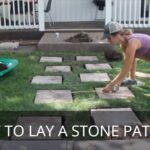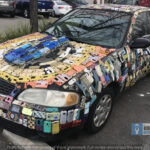So, you’re looking for methods to remove concrete anchors; here’s a complete guide on our most popular tried-and-test methods that not just reduce your effort but let you easily break off these anchor leaving no marks at all.
In the entire construction industry, contractor’s use concrete anchors to firmly support different component ranging from massive motors to pipes and give assistance to structural stability along with safety. However, at times; you need to remove these anchors to do some remodeling or renovation. That’s where you need to go through difficult and labor-intensive methods of concrete anchors removal.
But, you know what, the efficient and clean removal of different types of anchors is very possible due to introduction of new products that not only significantly reduced the effort but also make it easy without damaging the concrete.

Understanding Concrete Anchors and Their Characteristics
There is a vital role of concrete anchors in construction projects and these anchors provide stability and support.
Concrete and masonry fasteners and anchors bring together an assortment of bolts, sleeves, screws, and parts. They are specifically made to become a permanent part of tough materials like concrete and brick.
Some components expand as they are inserted into the concrete, ensuring a tight connection. In other cases, potent adhesives keep the anchors securely fixed.
These fasteners have varying levels of strength, influenced by their type, build, and the nature of the concrete.
Regardless of the challenge, all concrete anchors are designed to remain steadfast, even when dealing with intense pressure, making their removal a tough task.
Also Read: Fire Pits on Concrete Patios – Safe or Not?
Like Us on Facebook!
Two primary categories of concrete anchors includes:
Subscribe Us on YouTube!

Male and Female Concrete Anchors
Anchors are further classified into two distinct types: male and female.
Female Concrete Anchors
Female concrete anchors bring innovation to the construction game. These anchors comprise a sleeve or tube with threads designed to suit females. Here’s how they work in simple terms:
- Placement: Builders insert the female-threaded part into a hole that’s been drilled beforehand.
- Expansion: With finesse, they expand the tube within the hole. Imagine it as gently stretching a rubber band to fit snugly.
- Securing: Some anchors lock in place using a specialized tool, ensuring a secure fit. Others are more straightforward – they widen when combined with a male-threaded bolt, screw, or rod.
In essence, these anchors offer a reliable solution for a wide range of construction needs, ensuring stability and strength in your structures.

Male Concrete Anchors
These anchors bring the anchoring element and the fastening rod together, creating a unified powerhouse. Here’s the breakdown:
- Integration: Imagine merging the anchor and the fastening rod into a single, cohesive unit.
- Activation: Drive the pin into position or secure the threaded rod with a nut. As you do this, a remarkable transformation takes place – the anchor expands and solidly locks into place.
In simple words, male concrete anchors are like the superheroes of stability, effortlessly fusing elements to ensure your structures stand strong and unshakable.
Also Read: Concrete Pad for Hot Tub – Thickness – How to build one?
Why concrete anchor removal is difficult?
Once fixed, concrete fasteners are typically intended to remain in place within concrete, brick, or block. Removing them can lead to damage of the underlying material.
Applying excessive force can cause the base material to weaken, the anchor to disconnect, and even create a hole shaped like an inverted cone in the concrete.
However, situations might arise where removal becomes necessary. Both male and female anchors can be removed if proper steps are followed. It’s also crucial to predict whether the fixture and anchor might need removal, as this influences the choice of concrete anchor type for a particular application.
Make informed choices to ensure both strength and flexibility in your construction projects.
Removing Concrete Anchors: A Complex Task Simplified
Removing concrete anchors, a task commonly encountered in renovations and various construction projects, has traditionally been labor-intensive and challenging. For instance, warehouses frequently require the relocation of pallet racks, secured by either wedge or strike anchors, to optimize storage space.
Unfortunately, most concrete anchors cannot be fully extracted without causing damage to the concrete. Instead, the process involves severing the above-surface portion of the anchor and then covering the remaining part and the hole with a concrete-patching solution.
The removal of female and male concrete anchors varies in complexity:
Female Concrete Anchors:
Removal is relatively straightforward. A screwdriver, pipe wrench, or vise grips can be employed to unthread the protruding bolt, leaving the female anchor flush with the concrete. Alternatively, a hammer can be used to knock the anchoring tube beneath the floor, or it can be pulled out in some cases.
Male Concrete Anchors:
This category presents more challenges. Some anchors can be pounded into the ground if the hole beneath them is deep enough. Others may require splitting with a hacksaw or cut-off wheel, leaving a protruding nub that needs to be flattened or leveled through effort-intensive methods.
Wedge Anchors
For wedge anchors, follow these simple steps:
- Drilling: When creating a hole for a wedge anchor, make it twice as long as the anchor itself. This provides space for the anchor to be hammered into the hole until it’s level with the base material.
- Removal: If needed, wedge anchors can be taken out. Use a hacksaw or cutoff wheel to saw them off at the base material’s surface.
Concrete Screws
Concrete screws are threaded screws that create their own threads within concrete, brick, or block.
- Easy Removal: To remove screws like Tapcons, turn the screw counter-clockwise, and it will unscrew from the base material.
- One-Time Strength: It’s important to note that the holding strength of Tapcons might decrease if reinserted into the same hole.
Sleeve Anchors
Let’s break down sleeve anchors in a simple way:
- Drilling: Make a hole twice as long as the sleeve anchor you’re using.
- Preparation: Remove the nut, washer, and the round or flat head of the sleeve anchor.
- Insertion: Gently pound the threaded stud of the sleeve anchor into the base material.
- Alternative: If pounding isn’t an option, cut the stud using a hacksaw or cutoff wheel.
The Bolt breaker
The traditional method to remove the anchor bolt results in damaging the concrete. The new technology results in creation of innovative solutions and product named as Bolt Breaker came in to existence. Bolt-Breaker works on the principle that it weakens the molecules within the bolt and break off the rods/bolts through carefully designed process and is effective in removing the bolts without damaging the concrete.
Even harder bolts, such as SAE Grade 8 carbon-alloy steel bolts, are handled with remarkable precision.
The Bolt Breaker is available in different anchor bolt, diameter of which are 1/4″, 3/8″, 1/2″, 5/8″, and 3/4″. By using carbon-steel tips tailored to each anchor bolt’s diameter, The Bolt-breaker can remove concrete anchors at or below floor level, rendering the floor ready for concrete patching.
Removing Different Concrete Anchor Types:
The removal of concrete anchor in an efficient way requires innovative technology, Bolt Breaker is one of Best option in this regard. However, in cases where alternatives are preferred or different anchor types need to be addressed, various methods are available:
Removing Wedge Anchors
Wedge anchors, commonly utilized to secure light posts, ductwork, and pallet racks in solid concrete, can be extracted through several approaches:
- Pounding the anchor into the concrete if the hole allows
- Cutting the anchor above the surface and pounding it flat
- Utilizing the Boltbreaker to break off the rod cleanly
Removing Sleeve and Strike Anchors
You can remove sleeve anchors by tapping below the surface of the concrete. But make sure to remove the nut and washer beforehand. Sleeve and strike anchors, with projecting threaded rod from the sleeve can be removed or patched with the steps below:
- Removing the nut and washer of the anchor.
- If you’re lucky to have a deep hole, you can pound the anchor into the concrete using the hammer.
- For the protruding threaded portion, cutting off the section using the Boltbreaker or other tools to break off the rod cleanly. You just need to slide the Boltbreaker over the projected part followed by back and forth rotation until snaps off below the surface.
- Flattening any remaining nub flush with the surrounding concrete
Removing Split Drive and Hammer Drive Anchors
- These anchors, characterized by pins and sleeves for insertion, present their own removal challenges:
- Using a flat pry-bar and hammer to extract the anchor
- Grinding the head off and flattening the protruding anchor
- Chiseling under the head and pulling out the anchor
Conclusion
The transformation of traditional technology into an innovative one results in the advent of a new era that not only saves time but is also cost-effective. Bolt Breakers, being innovative tools, are becoming more cost-effective and require less labor-intensive efforts.



















